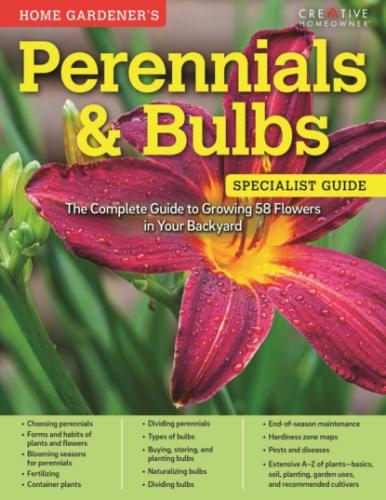• ‘Autumn Joy’ stonecrop (Sedum ‘Autumn Joy’)
• Balloon flower (Platycodon grandiflorus)
• Bee balm (Monarda didyma)
• Blanket flower (Gaillardia species)
• Bugbane (Cimicifuga racemosa)
• Catmint (Nepeta x faassenii)
• Coneflower (Rudbeckia fulgida ‘Goldsturm’)
• Daylily (Hemerocallis ‘Stella de Oro’, ‘Black Eyed Stella’, and ‘Happy Returns’)
• Fringed bleeding heart (Dicentra eximia)
• Lancaster geranium (Geranium sanguineum var. striatum)
• Obedient plant (Physostegia virginiana)
• Purple coneflower (Echinacea purpurea)
• Speedwell (Veronica spicata ‘Goodness Grows’ and ‘Sunny Border Blue’)
• Thrift (Armeria maritima)
• Tickseed (Coreopsis verticillata ‘Moonbeam’)
• Yarrow (Achillea species)
FOLIAGE
Flowers come and go in a perennial garden, but from spring until fall the leaves are always there. One secret of great garden design is to choose plants for their foliage as well as their flowers. Here are some guidelines to get you started.
A variety of leaf sizes and textures adds interest. Big, bold leaves such as those of bergenia or hosta bring substance and drama to a composition. Delicate, feathery leaves such as those of yarrows, fringed bleeding heart, and threadleaf coreopsis look airy and light. Spiky, upright foliage like that of irises contributes vertical lines that add drama to a collection of low or mounded plants.
Different shades of green add complexity to a bed or border. Combine blue- green, gray- green, yellow-green, deep forest green, and light spring green for more appeal. Lighter greens can bring an area forward visually or light up a shady spot while darker greens can make areas recede. Once you begin to notice foliage colors, you’ll appreciate their subtleties.
Colored foliage can add excitement or help soften bright colors. Chartreuse and golden leaves such as those of some hostas can light up a dim corner of the garden. Purplered leaves, such as those of ‘Husker Red’ penstemon (P. digitalis) are dramatic. Silver foliage such as that of artemisias helps blend strong colors (especially in sunny gardens) and softens harsh contrasts; it imparts a feeling of misty softness to a more subdued garden of blue and pink flowers.
Variegated leaves, patterned with two or more colors, can add dimension. They may be edged, streaked, striped, splashed, spotted, flushed, or mottled with two, three, or even more colors. Use a light hand when adding variegated plants—too many make plantings look busy and chaotic, and can actually detract from the flowers.
Конец ознакомительного фрагмента.
Текст предоставлен ООО «ЛитРес».
Прочитайте эту книгу целиком, купив полную легальную версию на ЛитРес.
Безопасно оплатить книгу можно банковской картой Visa, MasterCard, Maestro, со счета мобильного телефона, с платежного терминала, в салоне МТС или Связной, через PayPal, WebMoney, Яндекс.Деньги, QIWI Кошелек, бонусными картами или другим удобным Вам способом.
